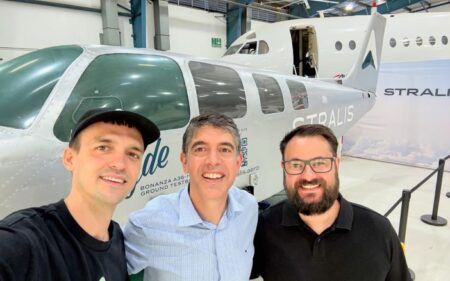Rolls-Royce has reached a milestone with ground testing of the small gas turbine it is developing for hybrid-electric aircraft by successfully completing its first fuel burn.
The engine, which has been designed using novel combustion technology to produce ultra-low emissions is to be integrated into a light-weight turbogenerator system.
The complete turbogenerator system is being developed for the Advanced Air Mobility (AAM) market, which Rolls-Royce describes as including eVTOL or electric short take-off and landing (eSTOL) aircraft of up to 19 seats. The gas turbine under test also has potential applications within helicopter, auxiliary power unit (APU) and defense markets.
Matheu Parr, customer director of electrical at Rolls-Royce said, “The first fuel burn of our new small gas turbine is a significant leap forward with successful stages throughout the test from light-up to the pull-away of the system.
“This follows the fast-paced development time of the new gas turbine from concept freeze to ‘pass to test’ in under two years. The turbogenerator system will enable our customers to extend the routes that electric flight can support and means more passengers will be able to travel further on low and potentially net zero emissions aircraft.”
The turbogenerator system will deliver an on-board power source of between 500kW and 1,200kW, enabling extended ranges for aircraft using sustainable aviation fuels and later, as it becomes available, through hydrogen combustion. This will open up new, longer routes than electric battery-powered aircraft.
Test facilities and equipment comprising of 14 subsystems in total were designed, procured and built – or adapted – by a global team in a record time of just under a year for the gas turbine project. The test set-up comprises commodity components such as valves and hoses, and bespoke subsystems such as the fuel injection systems, oil and ventilation systems, engine mount and water brake that were tailored to the specific test requirements for this new technology.
The first tests have helped the team to develop “highly relevant knowledge and generated real data to verify key technical attributes of the design”, said Rolls-Royce. This will allow for design adaptations for the next set of testing, ultimately pushing towards the maturity of a certified engine for hybrid-electric aircraft.
The turbogenerator can be used in serial or parallel hybrid applications and is suitable for use recharging batteries as well as providing energy to electrical propulsion units directly. It therefore enables aircraft to switch between power sources in flight.





